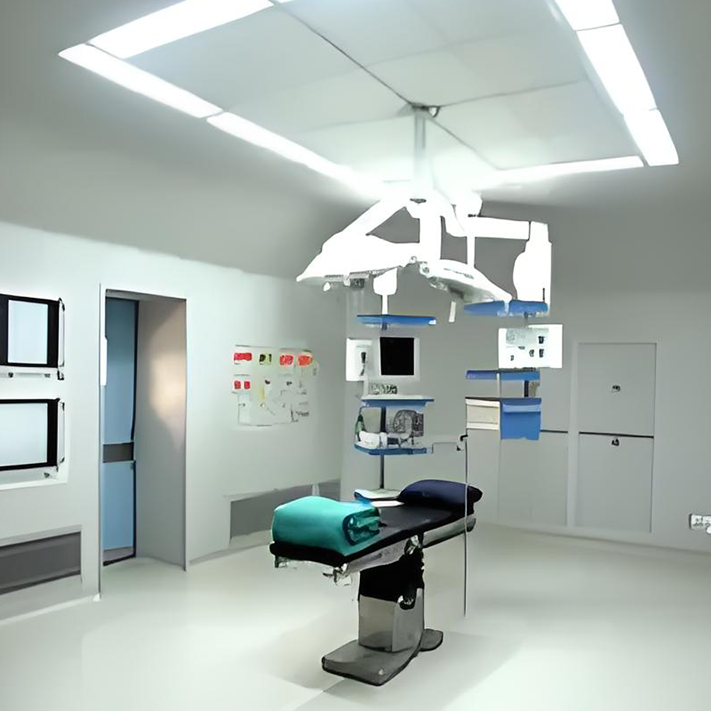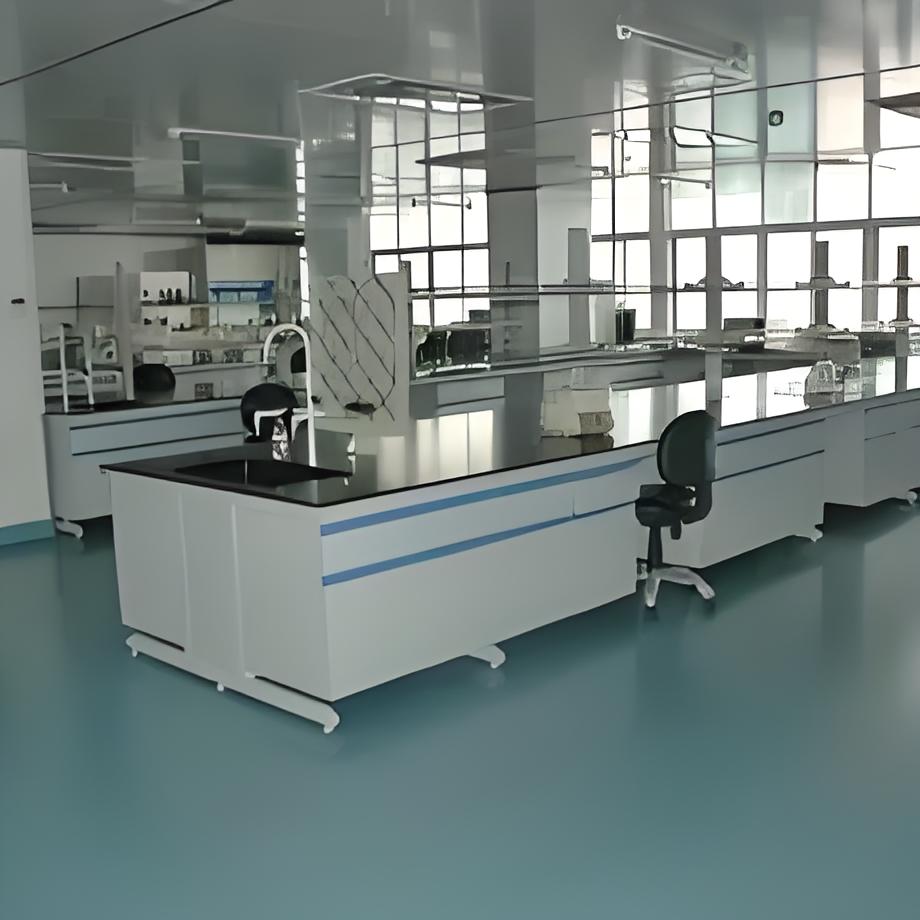




In the rapidly evolving world of scientific research, the ability to adapt laboratory spaces to changing needs is paramount. Flexible laboratory design has emerged as a critical approach, enabling facilities to accommodate new technologies, shifting research focuses, and stringent safety requirements without costly renovations. This concept goes beyond mere adaptability; it encompasses a holistic strategy that integrates modularity, efficiency, and sustainability. As laboratories in pharmaceuticals, biotechnology, and containment settings face unique challenges, embracing flexible laboratory design principles can future-proof investments and enhance operational effectiveness. This article explores how Modular Laboratory Design, flexible pharmaceutical lab design, and modular biocontainment lab planning contribute to this adaptability, while addressing common pitfalls that can undermine success. By understanding these elements, stakeholders can create environments that foster innovation while maintaining compliance and safety.

Flexible laboratory design refers to the creation of lab spaces that can be easily reconfigured, expanded, or repurposed to meet evolving scientific demands. Unlike traditional static labs, which are built for specific functions and often become obsolete, a flexible approach incorporates movable furniture, modular infrastructure, and scalable utilities. This design philosophy is driven by factors such as rapid technological advancements, fluctuating funding, and the need for interdisciplinary collaboration. For instance, a lab today might focus on molecular biology, but in five years, it could need to support high-throughput screening or genomic sequencing. With flexible laboratory design, such transitions require minimal downtime and expense.
The importance of this approach cannot be overstated. It reduces long-term costs by avoiding frequent rebuilds, improves productivity by enabling efficient workflows, and supports sustainability through reusable components. Moreover, in a post-pandemic era, flexibility is crucial for responding to emergencies, such as pivoting to vaccine development or diagnostic testing. Key elements include adjustable bench heights, plug-and-play utility connections, and open-plan layouts that can be partitioned as needed. By prioritizing flexible laboratory design, institutions can create resilient spaces that keep pace with scientific progress, making it a cornerstone of modern research infrastructure.
Modular Laboratory Design is a subset of flexible design that emphasizes prefabricated, standardized components that can be assembled and disassembled with ease. This approach leverages off-site construction techniques to create lab modules—such as workstations, storage units, and utility panels—that are manufactured in controlled environments and then integrated on-site. The result is faster deployment, higher quality control, and greater adaptability compared to traditional built-in-place methods. Modular Laboratory Design aligns perfectly with flexible laboratory design by providing a toolkit for reconfiguration; for example, labs can scale up by adding modules or reconfigure layouts to support new equipment.
One of the primary benefits of Modular Laboratory Design is its cost-effectiveness. By reducing construction time and labor, it minimizes disruptions to ongoing research. It also enhances safety, as modules can be designed to meet specific standards, such as fume hood placements or electrical requirements. In educational settings, modular labs allow for easy updates to curriculum changes, while in corporate R&D, they support agile project management. However, successful implementation requires careful planning, including coordination between architects, engineers, and end-users. Common challenges include ensuring module compatibility and addressing site-specific constraints, which we will explore later. Overall, Modular Laboratory Design is a powerful enabler of flexibility, offering a practical solution for dynamic research environments.
The pharmaceutical industry faces unique pressures, including rigorous regulatory standards, rapid drug development cycles, and the need for contamination control. Flexible pharmaceutical lab design addresses these by creating spaces that can adapt to evolving processes, such as from small-scale synthesis to large-scale production. This approach integrates flexibility with compliance, ensuring that labs meet Good Manufacturing Practice (GMP) and other guidelines while allowing for modifications. For example, a flexible pharmaceutical lab design might feature movable cleanroom partitions or modular HVAC systems that can be adjusted for different cleanliness levels.
In practice, flexible pharmaceutical lab design supports innovation by enabling quick shifts between research phases. A lab might start with drug discovery, requiring open areas for collaboration, then transition to clinical trial support, needing isolated zones for sensitive work. Flexibility also aids in risk management; during the COVID-19 pandemic, many pharma labs repurposed spaces for vaccine testing with minimal retrofitting. Key considerations include utility flexibility—such as easily accessible gas and water lines—and ergonomic designs that enhance technician safety. However, balancing flexibility with stringent regulatory requirements can be challenging, often necessitating expert input to avoid compliance gaps. By embedding flexible laboratory design principles, pharmaceutical facilities can achieve both agility and reliability, driving faster time-to-market for new therapies.

Biocontainment laboratories, which handle hazardous biological agents, demand the highest levels of safety and security. Modular biocontainment lab planning combines the adaptability of modular construction with the strict protocols of containment, creating facilities that can evolve with emerging threats, such as new pathogens or biosafety levels (BSL-3/4). This planning approach involves prefabricated modules for critical components like airlocks, decontamination systems, and sealed work areas, which can be standardized yet customized for specific risks. Modular biocontainment lab planning is a specialized aspect of flexible laboratory design, focusing on dynamic risk management.
The advantages of this approach include enhanced containment integrity through factory-tested modules and reduced on-site construction time, which is crucial in outbreak responses. For instance, during the Ebola crisis, modular labs were deployed rapidly to hotspots. Planning also involves scalability; a lab might be designed to handle BSL-2 work initially but be upgradeable to BSL-3 with additional modules. Key elements include redundant ventilation systems, material flow controls, and digital monitoring for real-time safety checks. However, modular biocontainment lab planning faces challenges like ensuring airtight seals between modules and maintaining negative pressure consistently. Collaboration with biosafety experts is essential to mitigate risks. By integrating flexible laboratory design principles, these labs can adapt to future biosecurity needs without compromising safety.
Despite its benefits, adopting flexible laboratory design is not without obstacles. One common issue is the higher initial investment; flexible components like modular furniture or advanced utility systems can cost more upfront than fixed alternatives. However, this is often offset by long-term savings, but convincing stakeholders can be difficult. Another challenge is the complexity of integration—ensuring that modular elements from different vendors work seamlessly together requires meticulous planning and standardization. In Modular Laboratory Design, poor coordination can lead to misaligned modules or utility failures.
In flexible pharmaceutical lab design, regulatory hurdles are prominent. Flexibility must not compromise compliance, and changes might require revalidation, which can be time-consuming. For example, moving a lab section could trigger new GMP audits. Similarly, in modular biocontainment lab planning, maintaining biosafety during reconfiguration is critical; any lapse could lead to contamination. Other problems include resistance to change from staff accustomed to traditional labs and the need for ongoing training on adaptable systems. To overcome these, early stakeholder engagement, phased implementation, and hiring experienced designers are key. By anticipating these challenges, organizations can develop strategies to harness the full potential of flexible laboratory design.
To maximize the benefits of flexible laboratory design, follow proven best practices. Start with a comprehensive needs assessment involving end-users to define current and future requirements. For Modular Laboratory Design, select interoperable modules and establish clear protocols for assembly. In flexible pharmaceutical lab design, incorporate regulatory reviews early to ensure adaptability aligns with standards. For modular biocontainment lab planning, prioritize safety by conducting risk assessments and using certified materials.
Technology integration is also vital; implement Building Information Modeling (BIM) to simulate layouts and identify issues before construction. Additionally, plan for lifecycle management, including regular updates and maintenance schedules. Emphasize sustainability by choosing energy-efficient modules and recyclable materials. Finally, foster a culture of flexibility through training, so staff can leverage adaptable features effectively. By adhering to these practices, flexible laboratory design can yield spaces that are not only responsive but also resilient and cost-effective.
Flexible laboratory design is more than a trend; it is a necessity for modern science. By embracing Modular Laboratory Design, flexible pharmaceutical lab design, and modular biocontainment lab planning, organizations can create environments that evolve with research demands. While challenges exist, they are manageable with careful planning and collaboration. As we look ahead, the integration of smart technologies and sustainable practices will further enhance flexibility, making labs smarter and greener. Investing in flexible laboratory design today ensures that scientific facilities remain at the forefront of innovation, ready to tackle tomorrow's challenges.